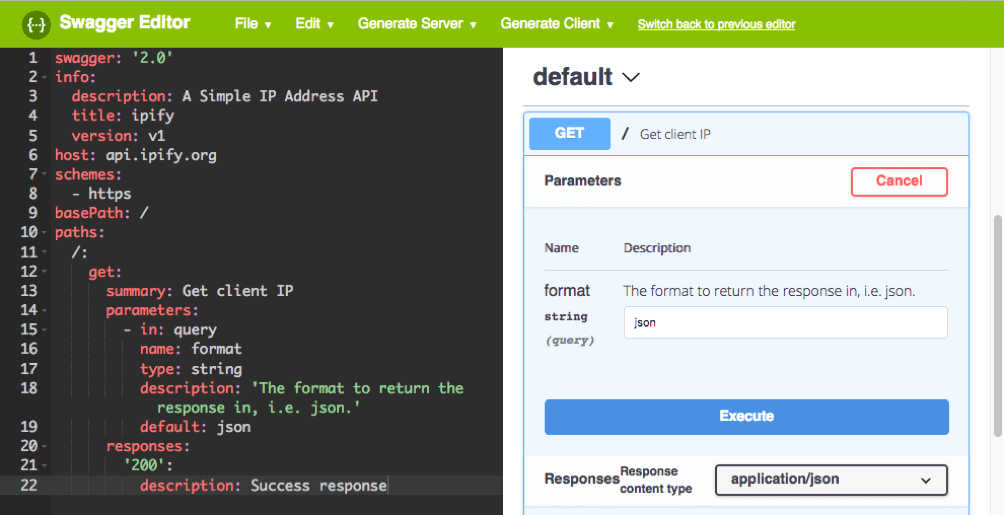
Swagger editor local code#
Generate code from an OpenAPI specification It shows the changes in the file that you selected second compared to the first one. The file opens in the editor with a preview panel that makes it easy to navigate the changes. This generates a Markdown file with a summary of modified specification elements. In the Project tool window, select two OpenAPI specification files, right-click them and select Compare OpenAPI Specifications. IntelliJ IDEA can compare the structure of OpenAPI specifications and create a summary of changed paths, parameters, responses, and any other elements that may break the compatibility. However, not all changes are critical for compatibility. One way is to look at the diff Ctrl+D and compare lines that changed. When there is a newer specification version, you probably want to compare it against the older version to make sure that they are compatible. To add OpenAPI specifications from a self-hosted SwaggerHub On-Premise instance, specify the URL of your instance. To add private OpenAPI specifications, provide your API key. Use to reload specifications that were modified.

In the Settings/Preferences dialog ( Ctrl+Alt+S), select Languages & Frameworks | OpenAPI Specifications.Ĭlick in the Remote Specifications list and specify the URL of an OpenAPI specification file or find an OpenAPI specification on SwaggerHub. You can add a link to the relevant remote specification. If you are writing client code for an external specification, there is no need to add it as a file to your project for auto-completing endpoint URLs. Add a remote OpenAPI specificationĮndpoint URLs that you define in OpenAPI specifications in your project are available for code completion. You can use the Endpoints tool window to see all endpoints defined in your OpenAPI specifications. If you start with an empty YAML or JSON file, you can type opnp or swag and press Tab to insert the corresponding live template.

Specify a name for the file and select the specification version and file format.ĭepending on the format and version, the new OpenAPI specification file contains the following template: These are regular YAML or JSON files with the definition of the OpenAPI specification version.įrom the main menu, select File | New | OpenAPI Specification, or press Alt+Insert and select OpenAPI Specification. IntelliJ IDEA recognizes a dedicated OpenAPI Specification file type with relevant coding assistance. IntelliJ IDEA provides coding assistance for OpenAPI definitions in YAML and JSON files, and integration with Swagger Codegen for generating server stubs, client libraries (SDKs), and documentation based on your OpenAPI specification. For more information, see Swagger documentation. Swagger is a set of tools based on this specification for writing, documenting, and consuming REST APIs. SwaggerHub has a single plan: Team at $36.0 per month.An OpenAPI Specification (OAS) is a description format for REST APIs. The pricing for SwaggerHub starts at $36.0 per month.

This file is essentially a resource listing of your API which adheres to OpenAPI Specification. Swagger does this by asking your API to return a YAML or JSON that contains a detailed description of your entire API. Swagger allows you to describe the structure of your APIs so that machines can read them.

Subsequently, question is, how do I get JSON from Swagger? To do this:
Swagger editor local download#
yaml file just click on the below link copy-paste your json in the editor and download the yaml file. If you do have the swagger json file which you feed to the swagger UI, then to generate. Simply drag and drop your OpenAPI JSON or YAML document into the Swagger Editor browser window.Īccordingly, how do I get the Yaml file from Swagger?


 0 kommentar(er)
0 kommentar(er)
